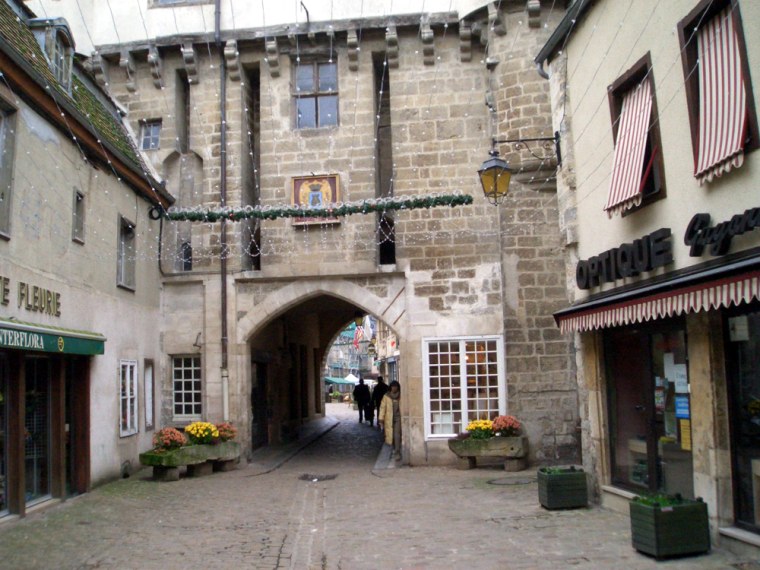This year’s trip to Europe was just plain expensive. With the dollar losing value on a daily basis, the cost of our yearly stay was through the roof. Despite the monetary hemorrhaging, and the last-minute switch of room (from one neighborhood to another) I did get a great chance to play with some of the newest portables -- and one or two even wowed some of the tech-savvy locals I met.
We’ll start with the cameras. The nice people at Hewlett-Packard got me one of their new Photosmart R607s to take along. Very compact, the R607 is a 4.1 megapixel digital camera in a 3.54 by 2.23 by 1.1 inch metal (front) and plastic (back) body. At 4.1 megapixels, it should be good for 11 by 17 inch prints.
The camera has a really nifty Pentax zoom lens capable of a 3x optical zoom (the lens moves) and a 7x digital zoom (done electronically). Multiply the zoom numbers and you get the 21x designation emblazoned on the front of the camera. It also comes with 32 MB of internal memory and accepts SD/MCC cards for additional storage (recommended). It connects to your computer (PCs and Macs) via a USB cable (supplied). There’s also an optional docking station available if you hate putting your camera down on its side.
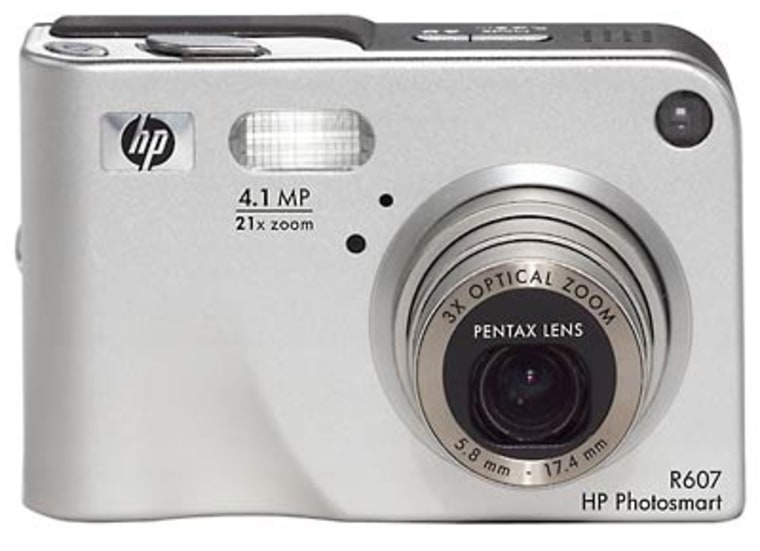
The R607 is fully automatic but also allows manual control over EV compensation, image quality, white balance, ISO speed, AE metering, HP Adaptive Lighting, color, saturation, sharpness. It comes with all sorts of software for handling your photos, making panoramas and even creating your own greeting cards.
H-P’s R607 is a terrific camera; it never let me down. Waiting time between pictures is average (4-5 seconds) – that’s because once you take a picture you can see it on the little screen and delete it – if you wish.
The only thing I’d like to see is a slightly larger screen. Quality-wise the 1.5-inch screen is bright and sharp. I just wish it were a little bigger.
The R607 sells for $249.99 on H-P’s Web site. If you buy a printer at the same time, you qualify for a $50 rebate. H-P’s little champ is highly recommended.
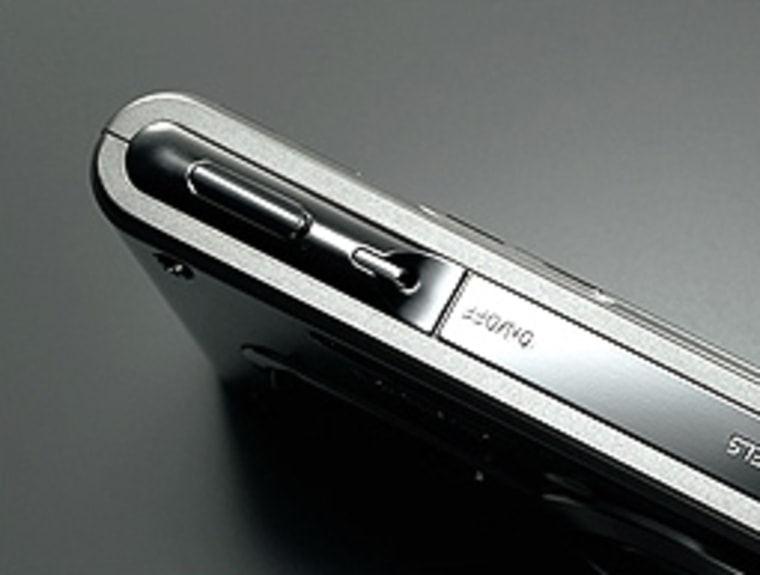
The other camera I brought with me was no slouch either. Casio calls it the world’s smallest digital camera with an optical zoom. It’s their Exilim EX-S100 model.
This camera is the size of 4 or 5 credit cards stacked on top of each other – or 3.46 by 2.24 by 0.66 inches at its widest point. It weighs just less than 4 ounces (excluding the battery and strap.) The camera’s body is made from stainless steel.
Inside, there’s a 3.34 megapixel camera, 9.3 MB of memory, a SD/MMC card slot, and a 2.8x optical zoom lens. To get an optical zoom into so small an enclosure Casio had to invent something new - the world’s first high refractive index, transparent ceramic lens making it possible to create a lens unit that is 0.59 inches thin.
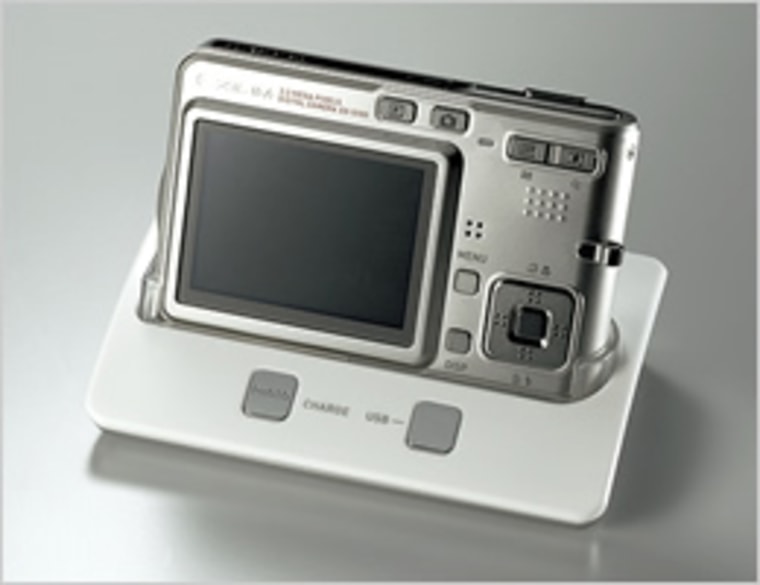
With such a small camera body you would never expect such a big screen on the flip side. The EX-S100 comes with a 2-inch color screen. It actually takes up more than half the back. There’s no optical viewfinder (to save space) so all snapshots have to be framed by using the screen – easy because of the screen’s size and quality.
The tiny sliver of rechargeable battery is capable of up to 180 pictures per charge. Recharging is done is the provided cradle – which also connects to your computer via a USB cable.
If you think I liked the Casio – you’re right. The photo taken at the top of this page was taken with the Casio. There is no other high-quality, digital camera with an optical zoom that is easier to slip into a pocket and carry with you everywhere. That’s exactly what I did all through my trip.
Design, quality – it’s all there – and you pay for it. Casio’s Exilim EX-S100 retails for $399.99 on Casio’s Web site. You might find slightly better prices on the Web or in stores near you. Even though it seems like a lot to spend for a 3.34 megapixel digital, the size and quality makes this a very smart choice.
Cell phones are cameras too
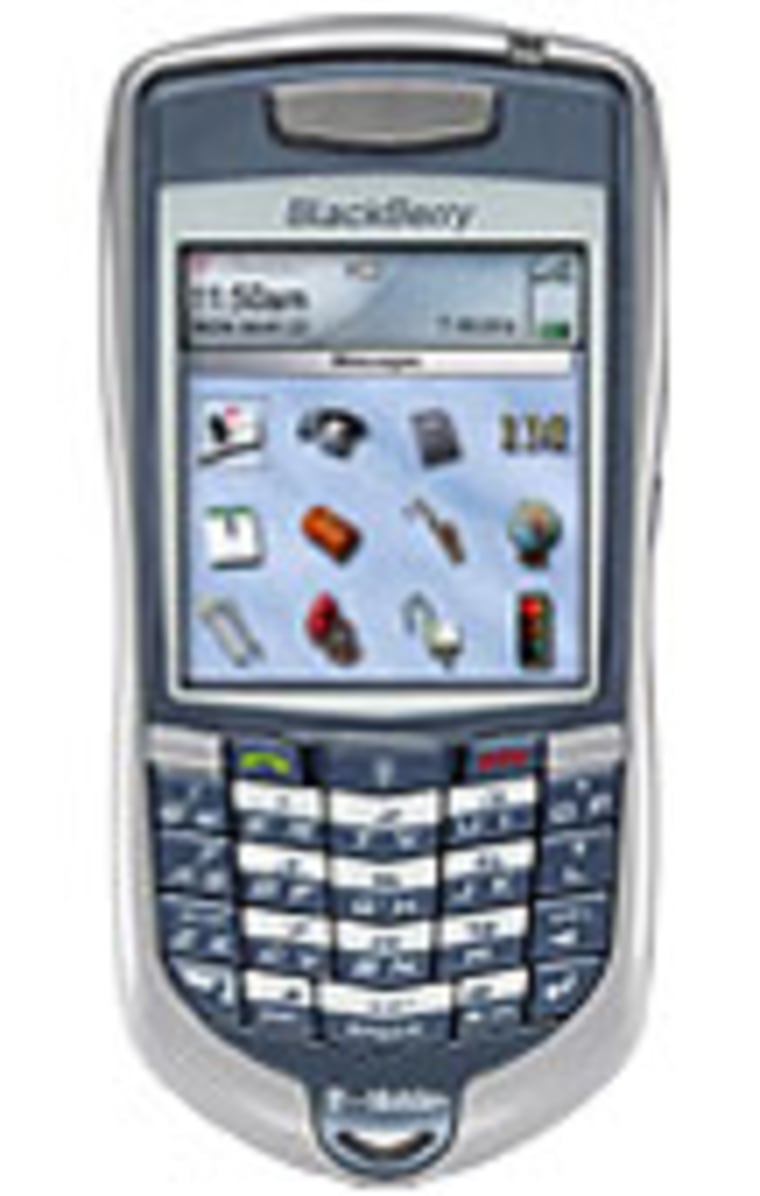
I brought a few of my favorites with me along with a new design to test. I must admit that it was a thrill turning on my Blackberry 7100t when I got off the plane in Paris: the phone found a French GSM/GPRS carrier and promptly began loading my e-mail. I was thrilled and amazed -- I still can’t believe stuff works "over there" -- and you will be to unless you’re the type of traveler who wants to cut themselves off completely.
I also brought my Nokia 6620 world phone with me. That phone has a built-in camera which takes stills and short movies and also comes with software that lets you watch video-on-demand, including live television via a service called MobiTV.
I’ve written about the service before ($9.95/month via ATT&T Wireless/Cingular) but I wasn’t sure it would work overseas. It did -- like gangbusters. In Paris. On the high-speed train. In the countryside in Burgundy. I wish you could have seen the faces of the people I met in the beautiful town of Semur-en-Auxois who watched in amazement at live American TV on a cellular phone. This was one technology that mobile-savvy Europeans hadn’t seen -- and they loved it.
I also have to admit that it was very cool being able to see U.S. newscasts outside of the United States. Hopefully more phones and services like this are coming our way in the near future.

The other phone I brought was the Sony Ericsson K700i world phone. It is two devices in one: half high-tech phone and half VGA Sony digital still/video camera. It measures a 3.9 by 1.8 by 0.8 inches and weighs 3.5 ounces (but seems heavier). When closed it looks just like a Sony digital camera -- there’s a huge family resemblance.
The phone's beautifully finished case is made from brushed aluminum and the large color screen (176-by-220 pixel TFT) can reproduce 65,000 colors. It’s great for some of the built-in video games. There’s 41MB of storage memory inside and the K700i even let’s you listen to FM radio or send your snapshots to your TV via Bluetooth attachments. Pretty cool.
As a cell phone the k700i worked flawlessly. As a digital camera everything functioned as promised. So far, so good.
But I found the overall styling strange. I always found myself opening the phone to view the screen to use the camera – and seeing nothing. That’s because the way the device is designed, my hand was always covering the lens. If I held the phone by its edges I had no problem, but 99 times out of 100 my hand was hiding the lens.
I now realize the 700i was just too much phone/camera for me. If you’re less clumsy – Sony Ericsson’s K700i is one heck of a phone. For now, I’ll stick to the ones that have very few buttons and blinking lights.
